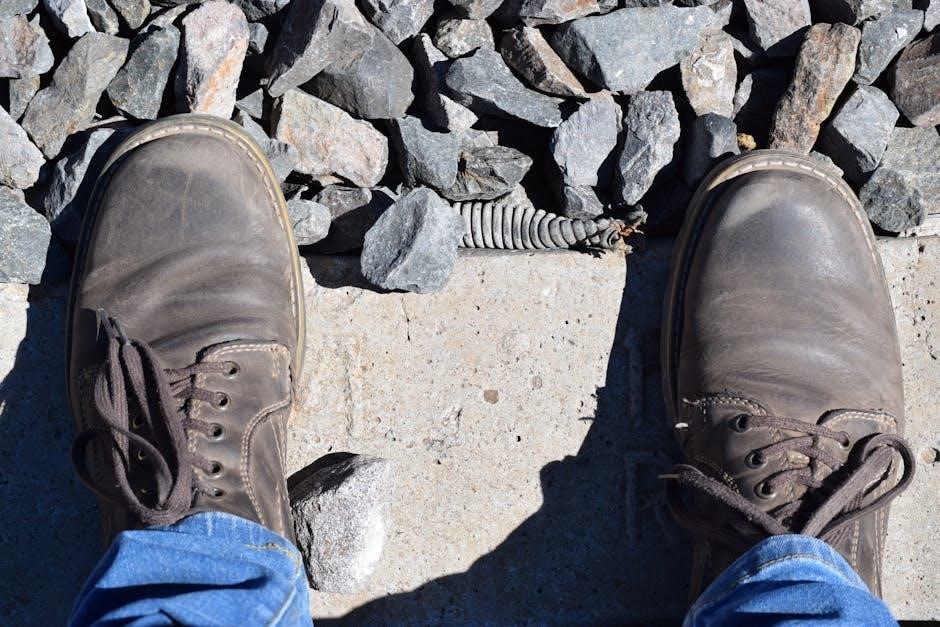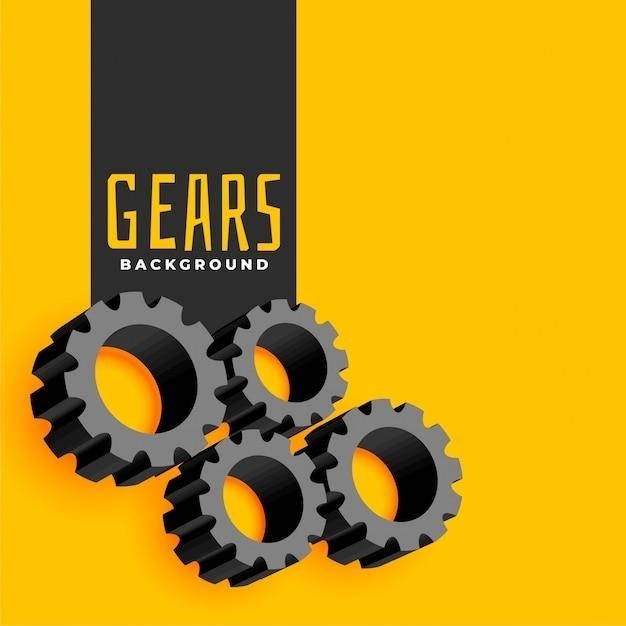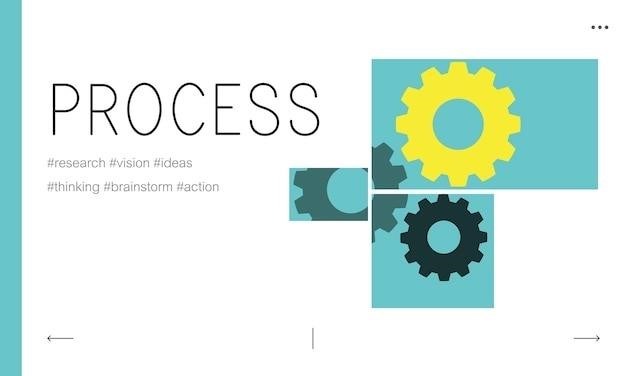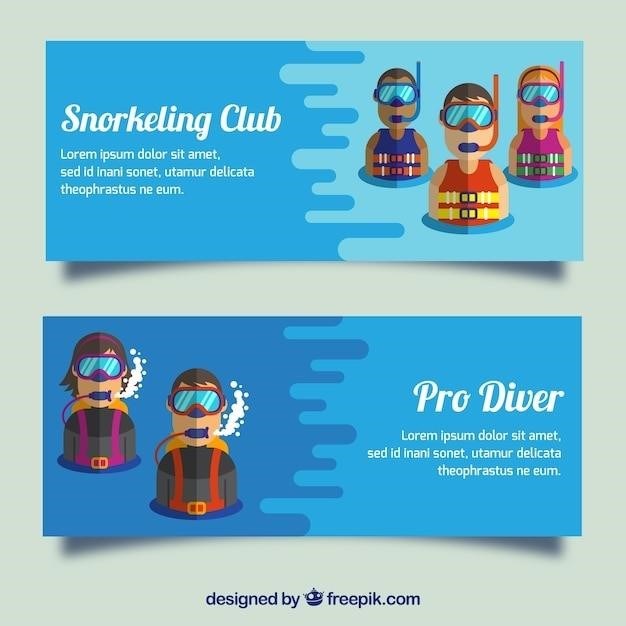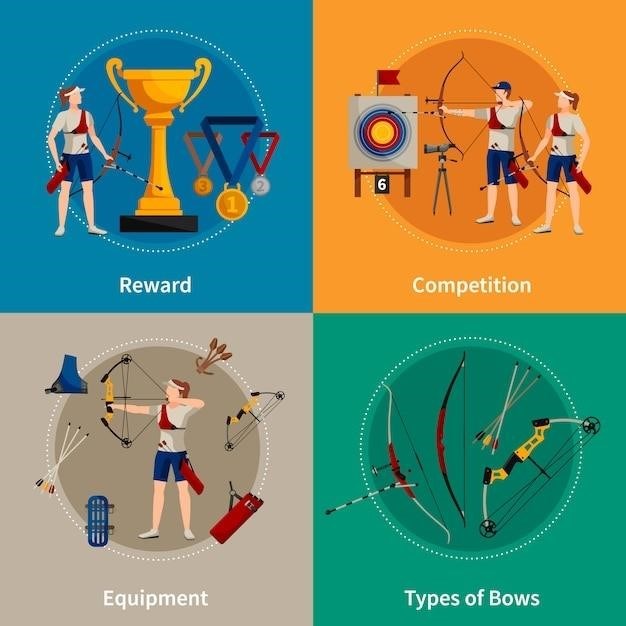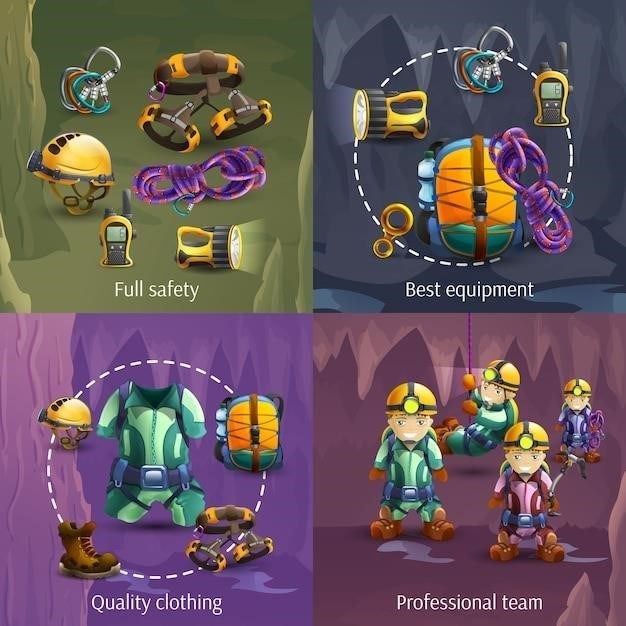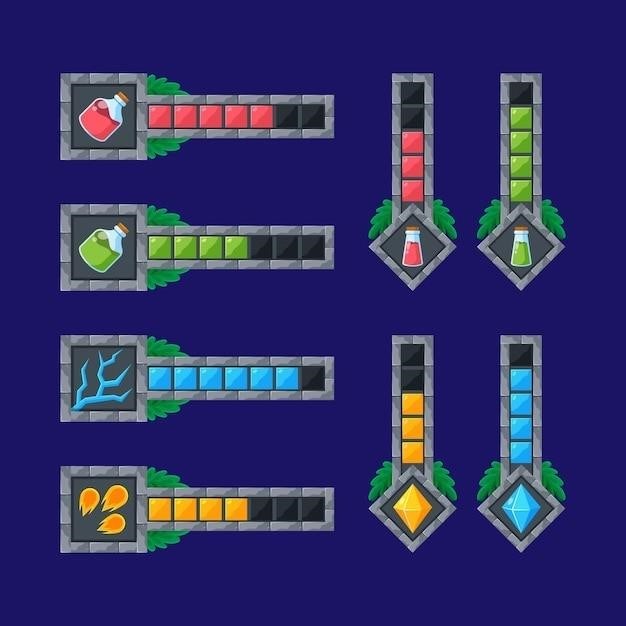Bloodstained⁚ Ritual of the Night Trophy Guide⁚ An Overview
This comprehensive guide details all 45 trophies in Bloodstained⁚ Ritual of the Night, from Bronze to Platinum. Learn strategies, utilize maps and walkthroughs to achieve 100% completion and conquer the challenging platinum trophy.
Introduction⁚ The Platinum Trophy Hunt
Embark on an enthralling journey to achieve platinum in Bloodstained⁚ Ritual of the Night, a gothic action RPG inspired by classic Castlevania titles. This guide will be your invaluable companion, providing a roadmap to navigate the game’s 45 trophies, ranging from easily attainable Bronze trophies to the more demanding Gold and Platinum accolades. Prepare for a challenging yet rewarding experience as you master combat, explore every nook and cranny of the sprawling castle, and uncover hidden secrets. The platinum trophy awaits those dedicated players who are willing to invest the time and effort required to complete all objectives. Our detailed breakdown will help you efficiently acquire each trophy, minimizing frustration and maximizing your enjoyment. Whether you’re a seasoned trophy hunter or a newcomer to the game, this guide will equip you with the knowledge and strategies to conquer the challenges ahead. Get ready to delve into the darkness, master your skills, and claim your platinum trophy!
Trophy Breakdown⁚ Bronze, Silver, Gold, and Platinum
Bloodstained⁚ Ritual of the Night boasts a diverse trophy system, categorized into four tiers⁚ Bronze, Silver, Gold, and Platinum. Bronze trophies represent the most readily achievable milestones, often rewarding players for completing early-game objectives or mastering basic mechanics. Silver trophies typically involve more significant accomplishments, such as defeating specific bosses or collecting a substantial number of items. Gold trophies demand a higher level of dedication and skill, usually requiring the completion of major story arcs or the mastery of advanced techniques. Finally, the coveted Platinum trophy serves as the ultimate prize, attainable only by securing all other 44 trophies within the game. This ultimate achievement signifies a complete mastery of the game’s mechanics, story, and hidden content. This structured hierarchy ensures a balanced and progressively challenging trophy acquisition experience, keeping players engaged throughout their playthrough. The journey to Platinum is a testament to dedication and skill, rewarding players for their comprehensive exploration of this gothic masterpiece.
Essential Tools and Resources⁚ Maps, Guides, and Walkthroughs
Successfully navigating the labyrinthine world and achieving all trophies in Bloodstained⁚ Ritual of the Night often requires leveraging external resources. Detailed maps are invaluable for locating hidden areas, secret passages, and elusive items crucial for trophy progression. Numerous online guides provide comprehensive walkthroughs, offering step-by-step instructions to overcome challenging boss battles, acquire specific items, and unlock hidden achievements. These guides often highlight missable trophies, ensuring players don’t inadvertently overlook crucial steps in their platinum trophy pursuit. Video walkthroughs offer a visual aid, demonstrating optimal strategies and techniques for overcoming obstacles and maximizing efficiency. Utilizing these tools significantly enhances the overall gaming experience, transforming potential frustrations into opportunities for strategic planning and accomplishment. The combination of maps, written guides, and video walkthroughs ensures a smoother path towards achieving the coveted Platinum trophy.
Early Game Trophies⁚ Building Momentum
This section focuses on readily attainable trophies during the initial game stages. Master basic combat, explore early areas, and progress the main storyline to unlock these early achievements and build momentum towards the platinum.
Story Progression Trophies⁚ Following the Main Path
Many trophies in Bloodstained⁚ Ritual of the Night are directly tied to advancing the main storyline. These trophies reward players for reaching specific story milestones and completing key narrative events. By focusing on the main quest, you’ll naturally unlock a significant portion of the game’s trophies. Pay attention to cutscenes and dialogue, as they often hint at upcoming objectives that will lead to trophy unlocks. Don’t rush through the story; take your time to explore thoroughly and discover hidden areas, as some story-related trophies might require you to backtrack or revisit earlier locations. While the main path is straightforward, there are often side quests or hidden areas that can be explored to enhance your experience and gather additional items or information. Remember to save frequently so you don’t lose any progress. The journey through the narrative is integral to unlocking several trophies, making diligent progress a key component of trophy hunting in Bloodstained⁚ Ritual of the Night. Enjoy the story and the rewards will follow.
Exploration Trophies⁚ Discovering Hidden Areas
Bloodstained⁚ Ritual of the Night rewards thorough exploration. Numerous trophies are earned by uncovering hidden areas, secret passages, and hard-to-reach locations throughout the sprawling castle. These often require careful observation, utilizing specific abilities like the double jump or the ability to break certain walls or floors. Consult online maps and guides to pinpoint these elusive areas, as some are incredibly well-hidden. Don’t be afraid to experiment with different approaches and abilities to find every nook and cranny. Many hidden areas contain valuable items, upgrades, and even essential story elements. Backtracking is crucial; revisit previously explored zones after acquiring new abilities or items, as you may find previously inaccessible areas. This methodical exploration is not only vital for unlocking trophies but also significantly enhances the overall gameplay experience. A keen eye for detail and a persistence to explore every inch of the castle is paramount to unlock these elusive exploration-based achievements in Bloodstained⁚ Ritual of the Night. The hidden rewards are well worth the effort.
Combat Trophies⁚ Mastering Skills and Abilities
Several trophies in Bloodstained⁚ Ritual of the Night directly reward combat prowess and mastery of the game’s diverse mechanics. These trophies often involve achieving specific combat feats, such as defeating a certain number of enemies using a particular weapon type or ability, or achieving a perfect run against challenging bosses. Experiment with different weapons, shards, and tactics to discover the most effective strategies for each encounter. Mastering the game’s intricate combat system, including precise timing and skillful use of dodges and parries, is essential for earning these trophies. Some trophies require defeating specific enemies under specific conditions, such as defeating a boss without taking damage or completing a challenging combat sequence within a time limit. Focus on upgrading your character’s stats and abilities strategically to enhance your combat capabilities. Online resources, such as video walkthroughs and guides, can help you identify optimal strategies for tackling difficult enemies and bosses. Persistent practice and strategic planning will be your greatest allies in achieving these challenging but rewarding combat-based trophies.
Mid-Game Trophies⁚ Increasing Difficulty
The middle portion of Bloodstained⁚ Ritual of the Night presents tougher challenges. This section focuses on acquiring key items, conquering challenging bosses, and mastering powerful abilities.
Boss Battles⁚ Conquering Challenging Encounters
Mid-game bosses in Bloodstained⁚ Ritual of the Night significantly increase in difficulty, demanding strategic combat and skillful use of abilities. Each boss encounter requires a different approach, understanding their attack patterns and weaknesses is crucial for success. Experiment with various weapons, shards, and techniques to find what works best against each unique foe. For example, utilizing specific shards can exploit vulnerabilities, while mastering dodge rolls and parries is essential for survival against relentless attacks. Remember to upgrade your equipment regularly, enhancing your offensive and defensive capabilities. Consider exploring different strategies, such as utilizing environmental hazards or employing specific tactics to overcome challenging boss mechanics. Don’t underestimate the importance of learning enemy attack patterns; predicting their movements allows for effective counterattacks and skillful evasion. Persistence and adaptability are key to overcoming these challenging encounters and progressing through the game. Utilize online resources such as walkthroughs and guides, which can provide valuable insights into boss weaknesses and effective strategies. By combining strategic planning, skillful execution, and resourcefulness, you can successfully conquer these difficult battles and earn valuable trophies;
Item Collection Trophies⁚ Gathering Key Items
Many trophies in Bloodstained⁚ Ritual of the Night are tied to collecting specific items scattered throughout the game’s expansive world. These items range from common resources to rare and powerful equipment. Thorough exploration is crucial for uncovering hidden treasures, often located in secret areas or requiring specific actions to reveal them. Utilizing a map is highly recommended, as it helps track your progress and pinpoint the location of missing items. Some items might be rewarded for completing quests or defeating specific enemies. Others might require specific actions, such as finding hidden pathways or solving environmental puzzles. Pay close attention to the game’s environment; many hidden items are cleverly concealed. Consult online guides and walkthroughs if you’re struggling to locate specific items; many resources provide comprehensive item locations and collection strategies. Remember to check your inventory regularly to track your progress and identify any missing items. Persistence and methodical exploration are key to collecting all the required items and unlocking the associated trophies. While some items are straightforward to find, others demand dedicated exploration and potentially multiple playthroughs to ensure complete acquisition.
Shard Acquisition⁚ Unlocking Powerful Abilities
Collecting Demon Shards is a significant aspect of Bloodstained⁚ Ritual of the Night’s gameplay and trophy progression. These shards grant Miriam powerful new abilities, altering her combat style and opening up new areas; Acquiring all shards is a considerable undertaking, demanding thorough exploration and strategic enemy encounters. Not all shards are easily obtained; some require defeating specific bosses or hidden enemies, often located in obscure areas or under specific conditions. The drop rate for some shards can be notoriously low, making dedicated grinding necessary. Utilizing guides and walkthroughs can greatly assist in tracking down elusive shards and understanding the optimal strategies for obtaining them. Some shards might only be obtained during specific times of day, adding another layer of complexity. Consider using a comprehensive guide detailing shard locations, drop rates, and any specific requirements for acquisition. Remember that many shards are essential not only for combat but also for accessing new areas and progressing through the game. Patience and persistence are key to collecting all the Demon Shards, unlocking their potent abilities, and completing the associated trophy achievements. Plan your progression carefully, prioritizing the acquisition of shards that will provide the greatest benefit in accessing new areas and overcoming difficult enemies.
Late-Game Trophies⁚ The Final Push
The final stretch requires mastering the night mechanic, tackling hidden challenges, and achieving 100% completion for that coveted Platinum trophy. Prepare for a challenging but rewarding endgame.
Night-Specific Trophies⁚ Utilizing the Game’s Time Mechanic
Bloodstained⁚ Ritual of the Night cleverly incorporates a day-night cycle that significantly impacts gameplay and unlocks specific trophies. Several achievements hinge on completing tasks only available during nighttime hours. This includes encounters with unique enemies, bosses, or item drops. Understanding the game’s time mechanic is crucial for efficient trophy hunting. The transition between day and night isn’t instantaneous; it takes time, so plan accordingly. Some players find that strategically manipulating the game clock – perhaps by quickly cycling through menus or utilizing quick travel methods – can help expedite the process. However, this needs to be balanced with the overall progression of the game as you wouldn’t want to waste valuable time or resources. Remember that certain enemies, including some of the challenging Hunter bosses, exclusively appear under the cover of darkness. Defeating these nocturnal adversaries often unlocks specific trophies. Therefore, be sure to check your in-game clock frequently, and remember to adjust your playstyle to accommodate the shifts in available content.
Hidden Challenges⁚ Uncovering Secret Achievements
Beyond the main storyline and readily apparent objectives, Bloodstained⁚ Ritual of the Night presents a rewarding array of hidden challenges and secret achievements. These often require meticulous exploration, keen observation, or mastering specific game mechanics. Some hidden trophies involve discovering well-concealed areas, often requiring precise platforming skills or the utilization of specific abilities. Others necessitate deciphering environmental puzzles or engaging in unique combat scenarios; For instance, uncovering all hidden areas may lead to the discovery of powerful items or shards, while mastering certain combat techniques might unlock unique achievements. Consult detailed maps and walkthroughs to pinpoint these elusive secrets. Pay close attention to your surroundings; hidden pathways and interactive objects are often subtly integrated into the environment. Don’t hesitate to experiment with different approaches and strategies; some challenges may require unconventional solutions. Remember, thorough exploration and persistence are key to uncovering the full extent of Bloodstained’s hidden achievements, adding another layer of depth and replayability to the game.
The Platinum Trophy⁚ Achieving 100% Completion
The coveted Platinum Trophy in Bloodstained⁚ Ritual of the Night represents the ultimate achievement, signifying the completion of every trophy within the game. This requires a significant time investment and mastery of various aspects of gameplay, including story progression, exploration, combat, item collection, and the utilization of the game’s unique time mechanic. Securing the Platinum Trophy is a testament to dedication and skill, rewarding players for their thorough exploration and mastery of the game’s mechanics. While the individual trophies themselves may not be overwhelmingly difficult, the sheer number and variety necessitate a methodical approach. A well-structured strategy, incorporating the use of guides and maps, is highly recommended. Prioritize the completion of missable trophies, ensuring you don’t inadvertently lock yourself out of the Platinum. Remember, patience and persistence are key. The journey to the Platinum Trophy in Bloodstained⁚ Ritual of the Night is a marathon, not a sprint, demanding both skill and dedication. The reward, however, is well worth the effort.











